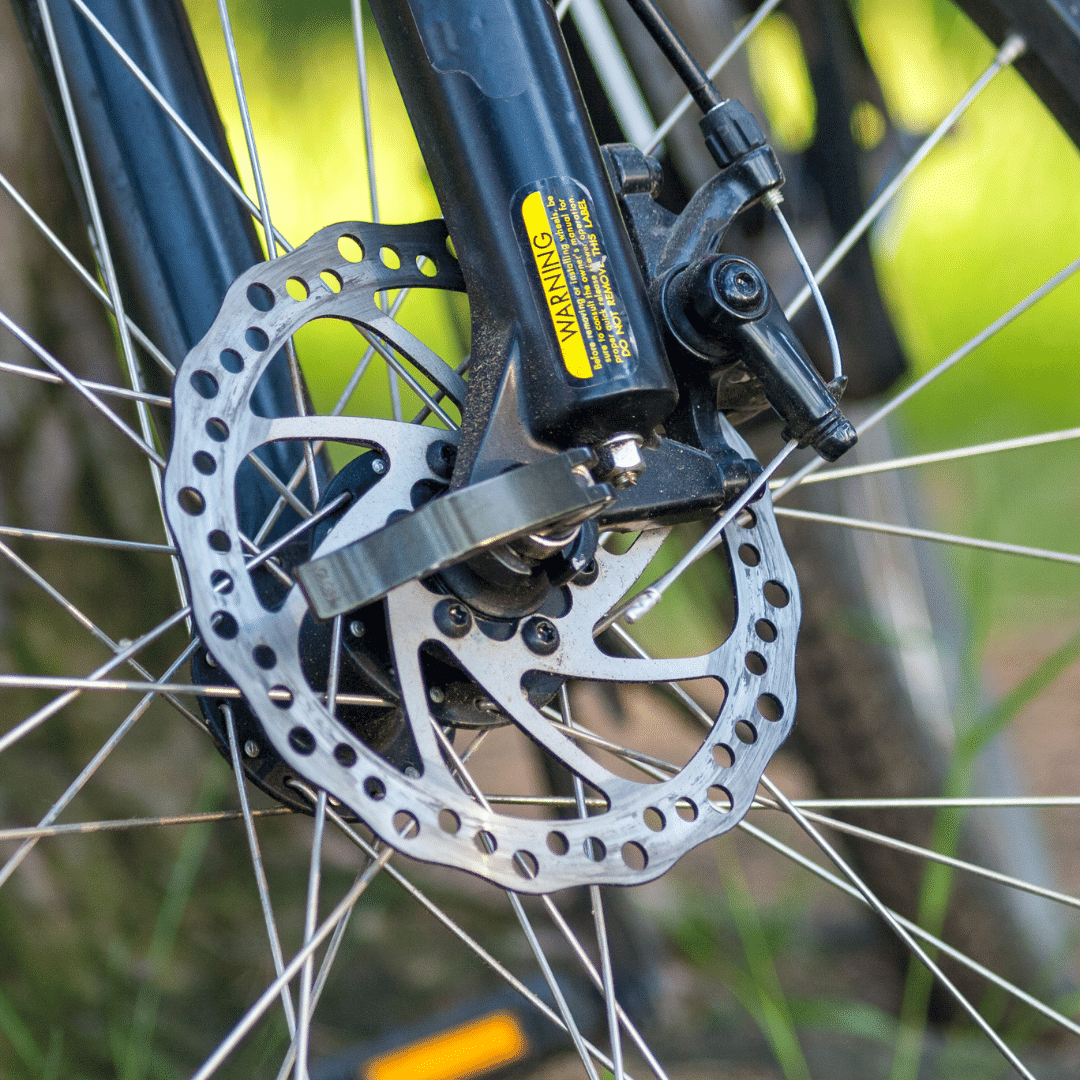Rim Brakes verses Disc Brakes for Your Gravel Bike
When it comes to your bike, there are two types of brakes that you will find installed on all bikes (unless you’re one of those extreme fixie riders). In this article we'll cover the basics on types of brakes and how you'll maintain each one.
Rim Brakes
Most older bikes are equipped with rim brakes. As the name implies, those brakes will stop the bike by putting pressure on the rim of the wheel to slow it down. You’ll know if you have rim brakes because the brake will be attached to the top of your tire at the rim.
You’ll find some gravel bikes with rim brakes, but most often you’ll find rim brakes on your road bike. This becomes the limiting factor when you’re trying to convert a road bike to gravel as rim brakes typically max out at a 28mm tire.
Disc Brakes
Disc brakes attach to a disk in the center of your wheel. Disc brakes will help you stop faster and more accurately. They are also more reliable in different weather conditions.
The biggest reason you’ll find gravel bikes equipped with disc brakes is that they do not limit tire size. It also makes gravel bikes fairly easy to convert to road tires but road bikes with rim brakes will have limitations when converting them to gravel.
Within disc brakes, there are two types of brakes - mechanical and hydraulic. It’s important to know which type of disc brake you have for maintenance.
Mechanical disc brakes will stop the bike using a steel cable that runs from the brakes on the handlebars to the brake. Hydraulic brakes will push brake fluid through the line. Hydraulic brakes going to have more stopping power, be smoother, and more accurate. They are also going to be more expensive and require more maintenance - including bleeding the brakes.
Mechanical disc brakes are still much more powerful than rim brakes. You’ll find them on most entry-level gravel bikes. Unless you’re planning on aggressive bike racing, mechanical disc brakes are going to be a less expensive option.
What you need to know about maintenance:
Rim Brakes
The padding on rim brakes will wear down over time. You'll be able to tell when it feels like you have to pull the brakes much harder to stop and/or by eyeballing the brake pads. The cable housing should also be cleaned and eventually replaced over time. Cleaning the cables should be included in an annual tuneup and the mechanic will be able to tell you if any cables need to be replaced.
Hydraulic disc brakes
You’ll hear the term ‘bleed the brakes’ on hydraulic disc brakes. This term simply means you change the brake fluid. Shimano recommends you bleed your brakes every 6-months while other sites suggest you do it annually. If the brakes start to feel 'squishy', it's time to bleed them. You’ll also need to change the brake pads as they wear down.
Mechanical disc brakes
These brakes will require a bit more maintenance. Because a cable system is involved in the breaking, you’ll need to replace the cables and of course, replace the brake pads. The cable housing can also get contaminated with dirt and debris, causing slower braking. You’ll notice that something is off if the brakes start to feel less responsive when you pull them
If you run tubeless tires and get your mechanic to replace the sealant, a good practice is to have them check the brakes each time you replace the sealant.
Otherwise, it’s always good practice to send your bike in for a tune-up once a year, which should include a thorough inspection of the brakes.
No matter which type of brake you choose, you'll want to stay on top of brake maintenance. There's nothing worse than getting halfway through a long ride and realizing that your brakes are feeling 'soft'.


